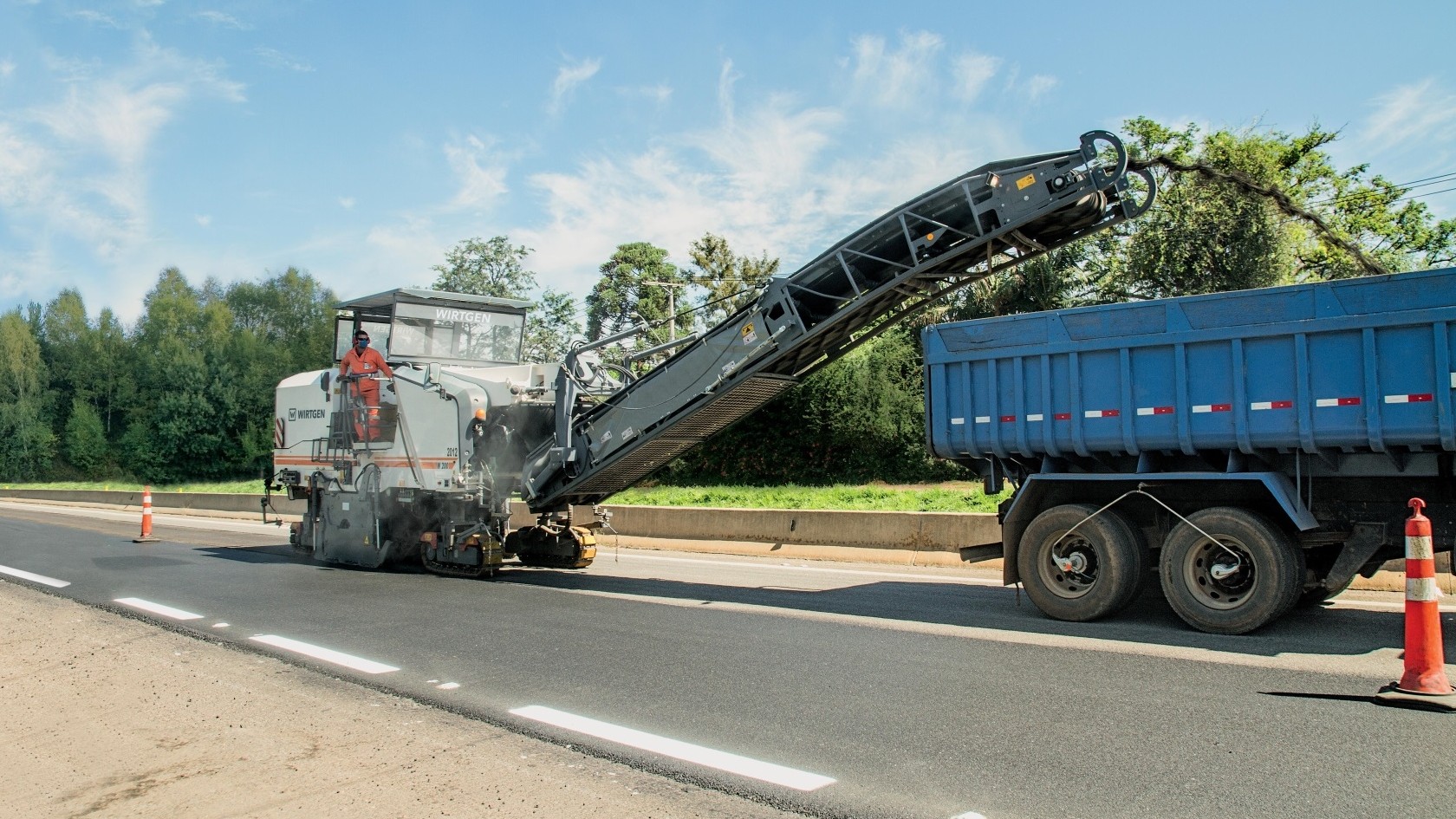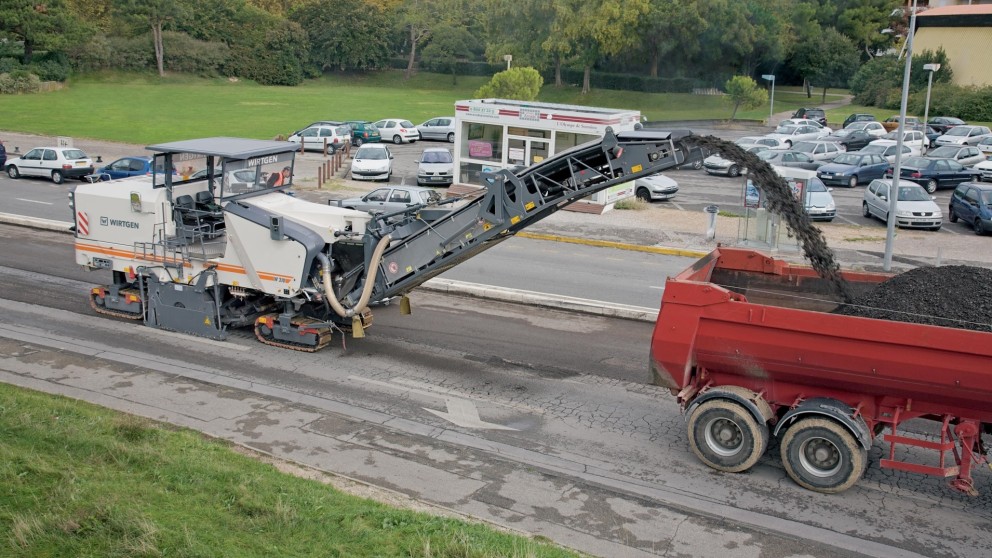Paving thin layers cold


Known as “microsurfacing” in many countries around the globe, paving thin layers in cold application prolongs the service life of damaged asphalt roads without the need for replacing the entire road pavement.
Traffic safety is jeopardized when the road surface gets slippery, when wheel ruts have dug into the pavement, or when the road is covered with bumps and deformations. Paving thin layers in cold application is a method that is increasingly used for restoring road surfaces to good evenness and skid resistance.
Cold milling machines with fine milling drums first prepare the road surface for application of the thin overlay. The resultant fine profile of the milled roadway creates an ideal substrate with which the micro-surfacing can engage. The "valleys" of the fine-milled profile securely engage the layers of the micro-surfacing, thus producing a perfect layer structure. Thin layers paved cold on cold provide a cost-effective as well as quick solution. The thin wearing course can be paved in the form of a mobile jobsite and the road reopened to traffic within a short space of time.
Preparatory milling followed by the placement of a thin cold layer – the economical way to restore grip to a roadway.
Once the fine milling machines have completed their preliminary operations, the paving mix for the thin, cold pavement layer is produced directly on site by means of automotive mixing and laying machines. It consists of a well-graded mineral aggregate mix with particle sizes ranging from 3 to 8 mm, polymer-modified cationic bitumen emulsion, cement and water. The cold paving mix is distributed across the full width in two separate layers, the first being the profile, the second the surface course layer.
Mixing and laying machines spread the mixture for the thin cold layer over the fine-milled surface with Vario screeds.
Ever more rarely does the strained financial situation of public budgets permit cost-intensive full rehabilitation measures to be carried out on a large scale. To ensure that the road network is maintained in good condition, alternative methods, such as paving thin layers in cold application, are therefore more popular than ever. Thin layers in cold application offer an economically efficient, but also fast-paced solution. Paving thin layers in cold application is suitable to be carried out as mobile roadworks, and the road can be reopened to traffic quickly. More than 5 million square metres of thin layers in cold application are paved in Germany alone each year.

